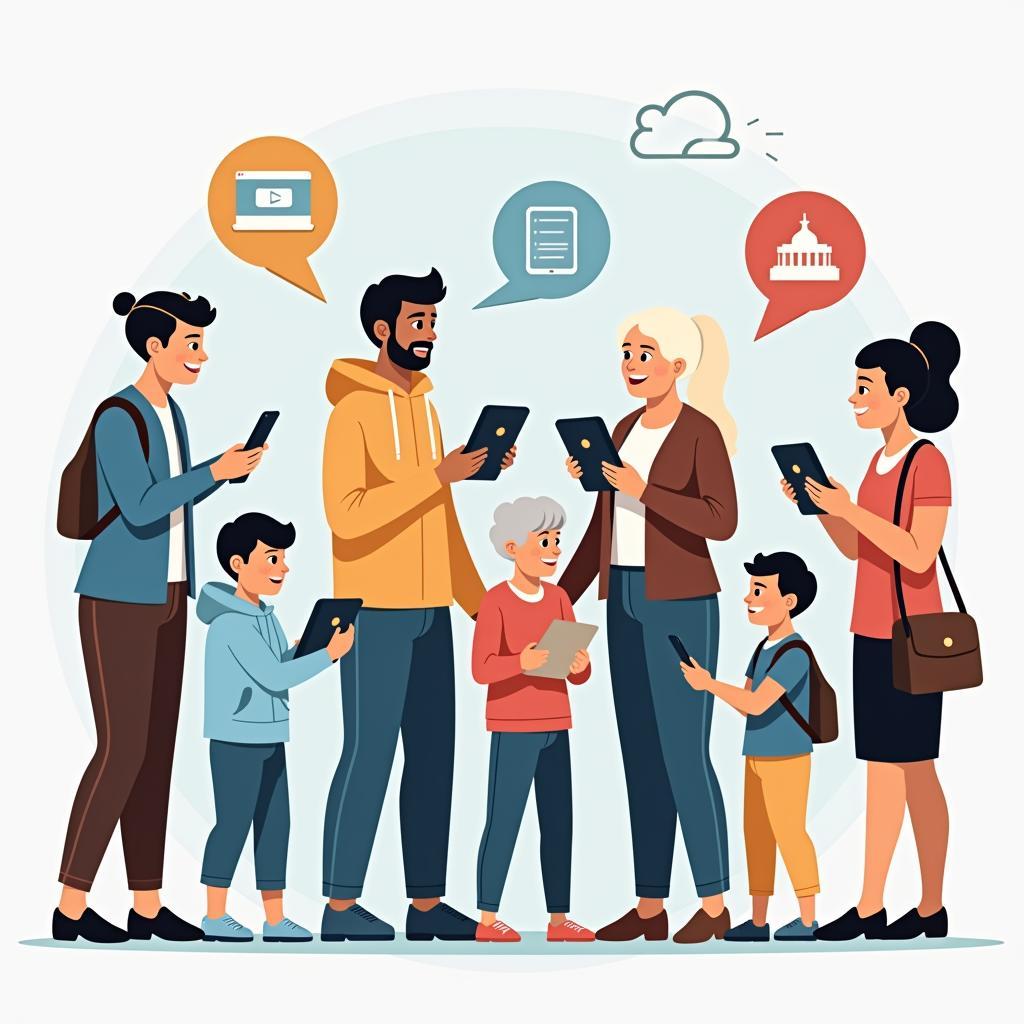Technology’s impact on public engagement has become an increasingly common theme in IELTS Writing Task 2, appearing in various forms across recent test papers. Based on analysis of past papers and current trends, this topic is likely to remain relevant for future examinations. Let’s explore a recent exam question that exemplifies this theme.
The role of technology in public policy has evolved significantly, creating new opportunities for citizen participation while also raising important questions about accessibility and effectiveness.
Task Analysis
Some people believe that modern technology has made it easier for governments to communicate with the public, while others think it has created barriers. Discuss both views and give your opinion.
This question requires candidates to:
- Examine both positive and negative aspects of technology in government-public communication
- Present balanced arguments for both perspectives
- Provide a clear personal stance supported by evidence
Band 8 Sample Essay (290 words)
Modern technology has fundamentally transformed how governments interact with citizens, and while this digital revolution has brought significant advantages, it has also introduced certain challenges. In my opinion, the benefits substantially outweigh the drawbacks.
Digital platforms have revolutionized government-public communication in several ways. Social media channels and mobile applications now enable authorities to disseminate critical information instantly to millions of citizens. For instance, during the COVID-19 pandemic, governments worldwide utilized digital platforms to provide real-time updates about infection rates, vaccination programs, and safety protocols. Similarly, The role of technology in public education has been enhanced through online portals where citizens can access public services, submit documents, and participate in public consultations effortlessly.
However, critics argue that technological advancement has created new barriers. The digital divide remains a significant concern, particularly affecting elderly citizens and those in rural areas with limited internet access. Furthermore, the complexity of some digital systems can intimidate users who lack technical proficiency, potentially excluding them from important civic processes. The impact of technology on civic participation shows that while overall engagement has increased, certain demographics remain underserved.
In my assessment, while these challenges are valid, they are outweighed by technology’s potential to enhance government transparency and citizen participation. Governments can address accessibility issues through digital literacy programs and maintaining traditional communication channels alongside digital ones. The key lies in implementing technology thoughtfully while ensuring no citizen is left behind.

Band 6.5 Sample Essay (270 words)
In recent years, technology has changed how governments talk to people. Some think this is good, while others see problems. I believe technology mostly helps but has some problems too.
On the positive side, technology makes it easier for governments to reach many people quickly. They can use websites and apps to share news and information. For example, many cities now have apps where people can report problems like broken streetlights or get information about local services. This is faster than old methods like newspapers or radio.
But there are also some problems. Not everyone has good internet or knows how to use computers well. Old people especially find it hard to use new technology. Also, some government websites are complicated and hard to understand. This means some people might miss important information or services they need.
I think technology helps more than it causes problems. Governments can reach more people faster and cheaper than before. They can also collect feedback from citizens more easily. However, they should remember that not everyone can use technology well and should keep some traditional ways of communication.
To make things better, governments should:
- Make websites and apps easier to use
- Help people learn about technology
- Keep some old ways of communication
- Make sure important information is available in many ways
This way, everyone can stay connected with their government, whether they use technology or not.
Role of museums in educating the public about history demonstrates how traditional institutions can successfully integrate digital tools while maintaining accessibility for all audiences.
Key Vocabulary
- disseminate (v) /dɪˈsemɪneɪt/ – to spread information widely
- digital divide (n) /ˈdɪdʒɪtl dɪˈvaɪd/ – the gap between those who have access to digital technology and those who don’t
- civic participation (n) /ˈsɪvɪk pɑːtɪsɪˈpeɪʃn/ – involvement in community and political activities
- transparency (n) /trænsˈpærənsi/ – openness and clarity in communication
- accessibility (n) /əkˌsesəˈbɪləti/ – the quality of being easily reached or used
Practice Suggestion
Try writing your own essay on this related topic:
“To what extent should governments invest in digital technologies for public services?”
Share your practice essays in the comments section for feedback and discussion with fellow learners.